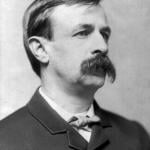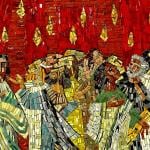In a recent PhD dissertation from Florida State, Margaret Armstrong traces the connections between the Oxford movement and Jane Harrison’s Prolegomena to the Study of Greek Religion.
Harrison “practiced a wild, emotional brand of High Churchism and that its traces linger in
her letters and her autobiography and further that its ritual and ceremony provided the
emotional spark for her life’s work as evidenced in Prolegomena to the Study of Greek
Religion” (218).
Armstrong writes that Harrison’s methods of searching for hidden meanings was indebted to Newman and others, as was her insistence that Greek religion foreshadowed Christianity: “Prolegomena can be viewed as a continuation of Harrison’s
fascination with the High Church and its sacraments, ‘foreshadowing’ the Christian
Eucharist by cleverly using excerpts from ancient Greek texts including Euripides,
Diogenes Laertius, and Pausanias, which contain the same Eucharistic symbols that the
Victorian High Church used. This technique of finding hidden meanings in ancient text is
very much in keeping with the Tractarian tradition; John Keble and John Newman, not
surprisingly, both wrote sermons on symbols that they believed foreshadowed the Eucharist utilizing ancient text from the Old Testament. What is surprising, however, is
that the Tractarians also found within the writings of the Greek poets, tragedians, and
philosophers hints and traces of scripture and of Christianity” (160-1).
Harrison’s attention to “lambs, wine, vines, and threshing floors” binds together the Hebrew Bible, Greek religion, and Victorian Anglo-Catholicism.











